【問題】
【難易度】★★☆☆☆(やや易しい)
次の文章は,同一特性を有する\( \ 4 \ \)個のバイポーラトランジスタを用いた直流で動作する図1の回路について,入力電流\( \ I_{\mathrm {in}} \ \)と出力電流\( \ I_{\mathrm {out}} \ \)の関係を求める過程に関する記述である。文中の\( \ \fbox{$\hskip3em\Rule{0pt}{0.8em}{0em}$} \ \)に当てはまるものを解答群の中から選びなさい。ただし,直流電圧源\( \ V_{\mathrm {CC}} \ \)の値は十分大きいものとする。また,バイポーラトランジスタのコレクタ電流\( \ I_{\mathrm {C}} \ \),ベース電流\( \ I_{\mathrm {B}} \ \),エミッタ電流\( \ I_{\mathrm {E}} \ \),ベース・エミッタ間電圧\( \ V_{\mathrm {BE}} \ \)は図2のとおりに定義され,\( \ I_{\mathrm {B}} \ \)は零,\( \ I_{\mathrm {E}} \ \)は\( \ I_{\mathrm {C}} \ \)に等しく,\( \ I_{\mathrm {C}} \ \)は熱電圧\( \ V_{\mathrm {T}} \ \),逆方向飽和電流\( \ I_{\mathrm {S}} \ \)によって,
\[
I_{\mathrm {C}}=I_{\mathrm {S}}\mathrm {e}^{\frac {V_{\mathrm {BE}}}{V_{\mathrm {T}}}} ・・・・・・・・・・・①
\]
と表されるものとする。
図1の回路において,\( \ i \ \)番目(\( \ i=1~4 \ \))のバイポーラトランジスタ\( \ \mathrm {Q}_{i} \ \)のベース・エミッタ間電圧を\( \ V_{\mathrm {BE}i} \ \),コレクタ電流を\( \ I_{\mathrm {C}i} \ \)とすると,四つのベース・エミッタ間電圧\( \ V_{\mathrm {BE1}}~V_{\mathrm {BE4}} \ \)の間には
\[
\fbox { (1) } ・・・・・・・・・・②
\]
という関係が成り立つ。①式から\( \ V_{\mathrm {BE}i} \ \)を\( \ I_{\mathrm {C}i} \ \)と\( \ V_{\mathrm {T}} \ \),\( \ I_{\mathrm {S}} \ \)で表すと
\[
\fbox { (2) } ・・・・・・・・・・③
\]
となる。この式を②式に代入すると,四つのコレクタ電流\( \ I_{\mathrm {C1}}~I_{\mathrm {C4}} \ \)の間の関係として
\[
\fbox { (3) } ・・・・・・・・・・④
\]
が得られる。\( \ \mathrm {Q}_{1} \ \)と\( \ \mathrm {Q}_{2} \ \)のコレクタ電流が\( \ I_{\mathrm {in}} \ \),\( \ \mathrm {Q}_{3} \ \)のコレクタ電流が\( \ \fbox { (4) } \ \),\( \ \mathrm {Q}_{4} \ \)のコレクタ電流が\( \ I_{\mathrm {out}} \ \)であることから,\( \ I_{\mathrm {out}} \ \)は
\[
\fbox { (5) } ・・・・・・・・・・⑤
\]
となる。
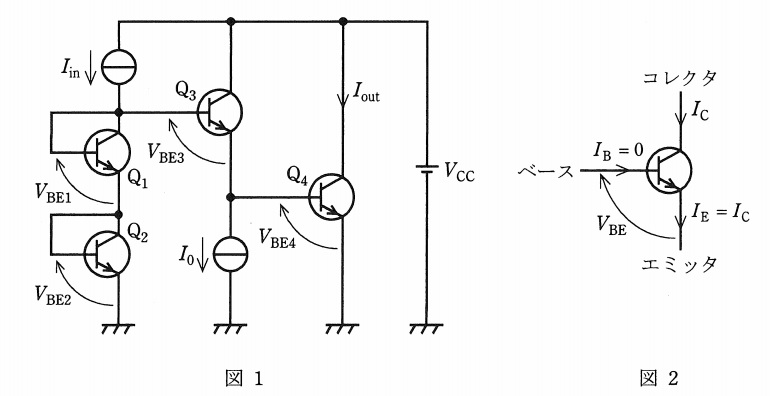
〔問7の解答群〕
\[
\begin{eqnarray}
&(イ)& I_{\mathrm {in}} &(ロ)& I_{\mathrm {C1}}I_{\mathrm {C2}}=I_{\mathrm {C3}}I_{\mathrm {C4}} \\[ 5pt ]
&(ハ)& V_{\mathrm {BE}i}=V_{\mathrm {T}}\ln \left( \frac {I_{\mathrm {S}}}{I_{\mathrm {C}i}}\right) &(ニ)& I_{\mathrm {out}}=\sqrt {I_{\mathrm {in}}I_{0}} \\[ 5pt ]
&(ホ)& V_{\mathrm {BE}i}=V_{\mathrm {T}}\frac {I_{\mathrm {S}}}{I_{\mathrm {C}i}} &(ヘ)& I_{0} \\[ 5pt ]
&(ト)& I_{\mathrm {out}}=I_{\mathrm {in}} &(チ)& V_{\mathrm {BE1}}+V_{\mathrm {BE2}}=V_{\mathrm {BE3}}+V_{\mathrm {BE4}} \\[ 5pt ]
&(リ)& \frac {I_{\mathrm {C1}}}{I_{\mathrm {C2}}}=\frac {I_{\mathrm {C3}}}{I_{\mathrm {C4}}} &(ヌ)& I_{\mathrm {out}}=\frac {I^{2}_{\mathrm {in}}}{I_{0}} \\[ 5pt ]
&(ル)& I_{\mathrm {out}} &(ヲ)& I_{\mathrm {C1}}I_{\mathrm {C3}}=I_{\mathrm {C2}}I_{\mathrm {C4}} \\[ 5pt ]
&(ワ)& V_{\mathrm {BE1}}-V_{\mathrm {BE2}}=V_{\mathrm {BE3}}-V_{\mathrm {BE4}} &(カ)& V_{\mathrm {BE}i}=V_{\mathrm {T}}\ln \left( \frac {I_{\mathrm {C}i}}{I_{\mathrm {S}}}\right) \\[ 5pt ]
&(ヨ)& V_{\mathrm {BE1}}+V_{\mathrm {BE3}}=V_{\mathrm {BE2}}+V_{\mathrm {BE4}}
\end{eqnarray}
\]
【ワンポイント解説】
バイポーラトランジスタの理解度を確認する問題です。バイポーラトランジスタの性質を理解し、問題に慣れてしまえば,確実に得点できる問題となります。
【解答】
(1)解答:チ
図1-1に示す電位を\( \ V_{\mathrm {in}} \ \)とすると,図1-1に示す\( \ 2 \ \)個の回路から,
\[
\begin{eqnarray}
V_{\mathrm {in}}&=&V_{\mathrm {BE1}}+V_{\mathrm {BE2}}=V_{\mathrm {BE3}}+V_{\mathrm {BE4}} \\[ 5pt ]
\end{eqnarray}
\]
と求められる。

(2)解答:カ
①式を変形すると,
\[
\begin{eqnarray}
I_{\mathrm {C}i}&=&I_{\mathrm {S}}\mathrm {e}^{\frac {V_{\mathrm {BE}i}}{V_{\mathrm {T}}}} \\[ 5pt ]
\frac {I_{\mathrm {C}i}}{I_{\mathrm {S}}}&=&\mathrm {e}^{\frac {V_{\mathrm {BE}i}}{V_{\mathrm {T}}}} \\[ 5pt ]
\end{eqnarray}
\]
となるので,両辺対数をとってさらに変形すると,
\[
\begin{eqnarray}
\ln \left (\frac {I_{\mathrm {C}i}}{I_{\mathrm {S}}}\right) &=&\frac {V_{\mathrm {BE}i}}{V_{\mathrm {T}}} \\[ 5pt ]
V_{\mathrm {BE}i}&=&V_{\mathrm {T}}\ln \left( \frac {I_{\mathrm {C}i}}{I_{\mathrm {S}}}\right) \\[ 5pt ]
\end{eqnarray}
\]
と求められる。
(3)解答:ロ
(2)解答式を(1)解答式の両辺に代入し整理すると,
\[
\begin{eqnarray}
V_{\mathrm {BE1}}+V_{\mathrm {BE2}}&=&V_{\mathrm {BE3}}+V_{\mathrm {BE4}} \\[ 5pt ]
V_{\mathrm {T}}\ln \left( \frac {I_{\mathrm {C1}}}{I_{\mathrm {S}}}\right)+V_{\mathrm {T}}\ln \left( \frac {I_{\mathrm {C2}}}{I_{\mathrm {S}}}\right)&=&V_{\mathrm {T}}\ln \left( \frac {I_{\mathrm {C3}}}{I_{\mathrm {S}}}\right)+V_{\mathrm {T}}\ln \left( \frac {I_{\mathrm {C4}}}{I_{\mathrm {S}}}\right) \\[ 5pt ]
\ln \left( \frac {I_{\mathrm {C1}}}{I_{\mathrm {S}}}\right)+\ln \left( \frac {I_{\mathrm {C2}}}{I_{\mathrm {S}}}\right)&=&\ln \left( \frac {I_{\mathrm {C3}}}{I_{\mathrm {S}}}\right)+\ln \left( \frac {I_{\mathrm {C4}}}{I_{\mathrm {S}}}\right) \\[ 5pt ]
\end{eqnarray}
\]
となる。ここで,\( \ \displaystyle \ln \left( \frac {A}{B} \right) =\ln A-\ln B \ \)となるから,
\[
\begin{eqnarray}
\ln I_{\mathrm {C1}}-\ln I_{\mathrm {S}}+\ln I_{\mathrm {C2}}-\ln I_{\mathrm {S}}&=&\ln I_{\mathrm {C3}}-\ln I_{\mathrm {S}}+\ln I_{\mathrm {C4}}-\ln I_{\mathrm {S}} \\[ 5pt ]
\ln I_{\mathrm {C1}}+\ln I_{\mathrm {C2}}&=&\ln I_{\mathrm {C3}}+\ln I_{\mathrm {C4}} \\[ 5pt ]
\end{eqnarray}
\]
となる。また,\(\ln A +\ln B=\ln \left( AB\right)\)となるから,
\[
\begin{eqnarray}
\ln I_{\mathrm {C1}}+\ln I_{\mathrm {C2}}&=&\ln I_{\mathrm {C3}}+\ln I_{\mathrm {C4}} \\[ 5pt ]
\ln \left( I_{\mathrm {C1}} I_{\mathrm {C2}}\right)&=&\ln \left( I_{\mathrm {C3}} I_{\mathrm {C4}}\right) \\[ 5pt ]
I_{\mathrm {C1}} I_{\mathrm {C2}}&=&I_{\mathrm {C3}} I_{\mathrm {C4}} \\[ 5pt ]
\end{eqnarray}
\]
と求められる。
(4)解答:ヘ
\( \ \mathrm {Q}_{3} \ \)のコレクタ電流\( \ I_{\mathrm {C3}} \ \)は各トランジスタのベース電流が零であるから,
\[
\begin{eqnarray}
I_{\mathrm {C3}}&=&I_{\mathrm {E3}} \\[ 5pt ]
&=&I_{0} \\[ 5pt ]
\end{eqnarray}
\]
と求められる。
(5)解答:ヌ
\( \ I_{\mathrm {C1}}=I_{\mathrm {C2}}=I_{\mathrm {in}} \ \),\( \ I_{\mathrm {C3}}=I_{0} \ \),\( \ I_{\mathrm {C4}}=I_{\mathrm {out}} \ \)を(3)解答式に代入すると,
\[
\begin{eqnarray}
I_{\mathrm {in}}^{2}&=&I_{0}I_{\mathrm {out}} \\[ 5pt ]
I_{\mathrm {out}}&=&\frac {I_{\mathrm {in}}^{2}}{I_{0}} \\[ 5pt ]
\end{eqnarray}
\]
と求められる。

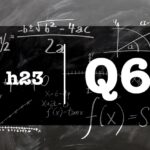


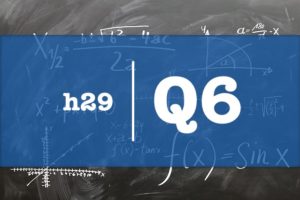

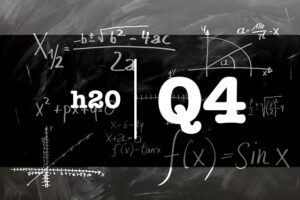
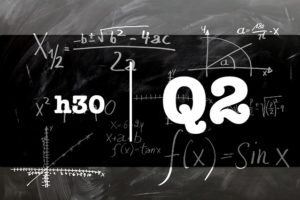
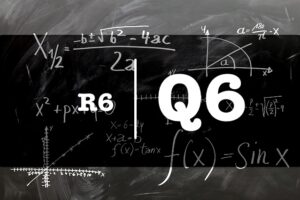
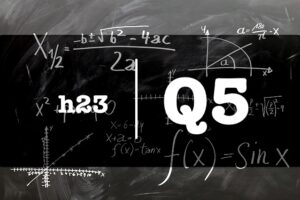
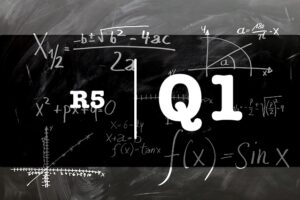










 愛知県出身 愛称たけちゃん
愛知県出身 愛称たけちゃん